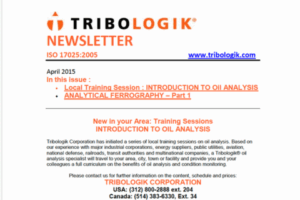Tribologik Corporation has initiated a series of local training sessions on oil analysis. Based on our experience with major industrial corporations, energy suppliers, public utilities, aviation, national defense, railroads, transit...
Foam in oil consists of the accumulation of small air bubbles at the surface of the lubricant. It is is caused by excessive agitation, inadequate levels of fuel, air leaks,...
Dimensional inspection includes many types of scanning devices for a broad range of applications. In the realm of 3D Scanning, the level of detail that can be captured makes it...
Everyone is looking to control costs. You want your budget to stretch as far as it can – of course, without sacrificing performance or quality.
California State University, Fullerton’s Society of Automotive Engineers (SAE) chapter chose IIA to aid them with the challenge to compete in the Formula SAE, a competition which encompasses designing, building,...
In partnership with custom fabricator Lopes Limited, Domson contributed to the design and erection of 2 new freestanding smoke stacks for a manufacturing plant in Sudbury.
One of the most common types of non-contact 3D scanning is structured light scanning. Used for both dimensional inspection and reverse engineering, structured light scanning employs projected light and cameras...
Although accurate and precise measurements are key components of dimensional inspection services, these are not the only qualities you should look for in a provider. You want a partner that...
Reverse engineering is used in a broad range of industries for numerous types of applications. Manufacturers and product developers use reverse engineering to replicate worn parts, to convert physical models...
Dimensional inspection equipment can range from a basic ruler that measures length to an optical sensor that provides measurements at the nano scale. Obviously, these two types of equipment are...


